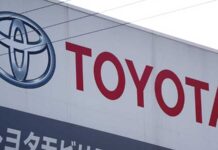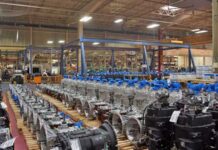
RCL described the result as “another phenomenal profit”, beating the previous record of $102m achieved in the quarter before.
Revenue for Q3 came in at $282m, compared with $135m for the same period of last year, for a cumulative nine month turnover of $767m, against $382m for the year before.
RCL’s net result for the quarter was up by a massive 1,300% on the previous year, with its average rate spiking to $490 per teu across its myriad of inter-connected regional services of shipper-owned, feeder and domestic container business.
Although RCL did not disclose its liftings for the third quarter, its revenue and average rate per teu suggests the line’s services had carryings of some 575,000 teu during the period.
The only concern for the 1979-founded Thai Stock Exchange-listed group is soaring operating costs, which despite its endeavours to cap increases, saw the operating expenses leap 20% on the previous quarter and by 42% year on year.
RCL attributed the cost increases to charter and bunker costs and the impact on voyage returns from increased port congestion.
Indeed, all the carriers that have published their Q3 results so far have reported significant operating cost rises – albeit mostly overshadowed by stellar net earnings currently being enjoyed in the liner sector.
During Hapag-Lloyd’s Q3 earnings call last Friday, CEO Rolf Habben Jansen said the carrier had incurred “quite a lot of congestion-related costs” in addition to significant increases in charter, bunker, haulage, storage and container repositioning costs.
Hapag-Lloyd’s transport expenses rose 16% in the nine-month period, compared with the previous year – virtually every cost element seeing inflationary pressures, many of which Mr Habben Jansen said were “here to stay”.
Nevertheless, Hapag-Lloyd is in a more fortunate position than many of its ocean carrier rivals, given that it leases only around 40% of its ships, compared for example, with CMA CGM’s 60%, Yang Ming’s 67% and Zim’s 99%.
RCL, the 22nd-ranked largest carrier with, according to Alphaliner data, an operating fleet of 39 vessels for a capacity of 80,000 teu, appears to have a low exposure to the charter market, with just seven vessels on charter, supplemented by some ad hoc charters.
Moreover, as reported by The Loadstar last week, RCL has taken advantage of the unremitting quest by ocean carriers to secure tonnage, by agreeing a five-year charter with Zim for two 11,800 teu ships under construction at a Japanese yard for delivery at the end of 2002 and beginning of 2023. Zim will announce its Q3 results tomorrow.
Although not officially confirmed by the parties, brokers are suggesting that the charters were agreed at around the market rate of $65,000 a day.
If correct, this could return RCL some $240m in charter revenue over the five-year hire, thus comfortably exceeding the circa-$200m cost of construction – and the ships will still have more than 20 years of working life left once the charters are complete.
Fuente:
Mike Wackett-https://theloadstar.com/rcl-reports-another-phenomenal-profit-but-operating-costs-are-soaring-too/



















